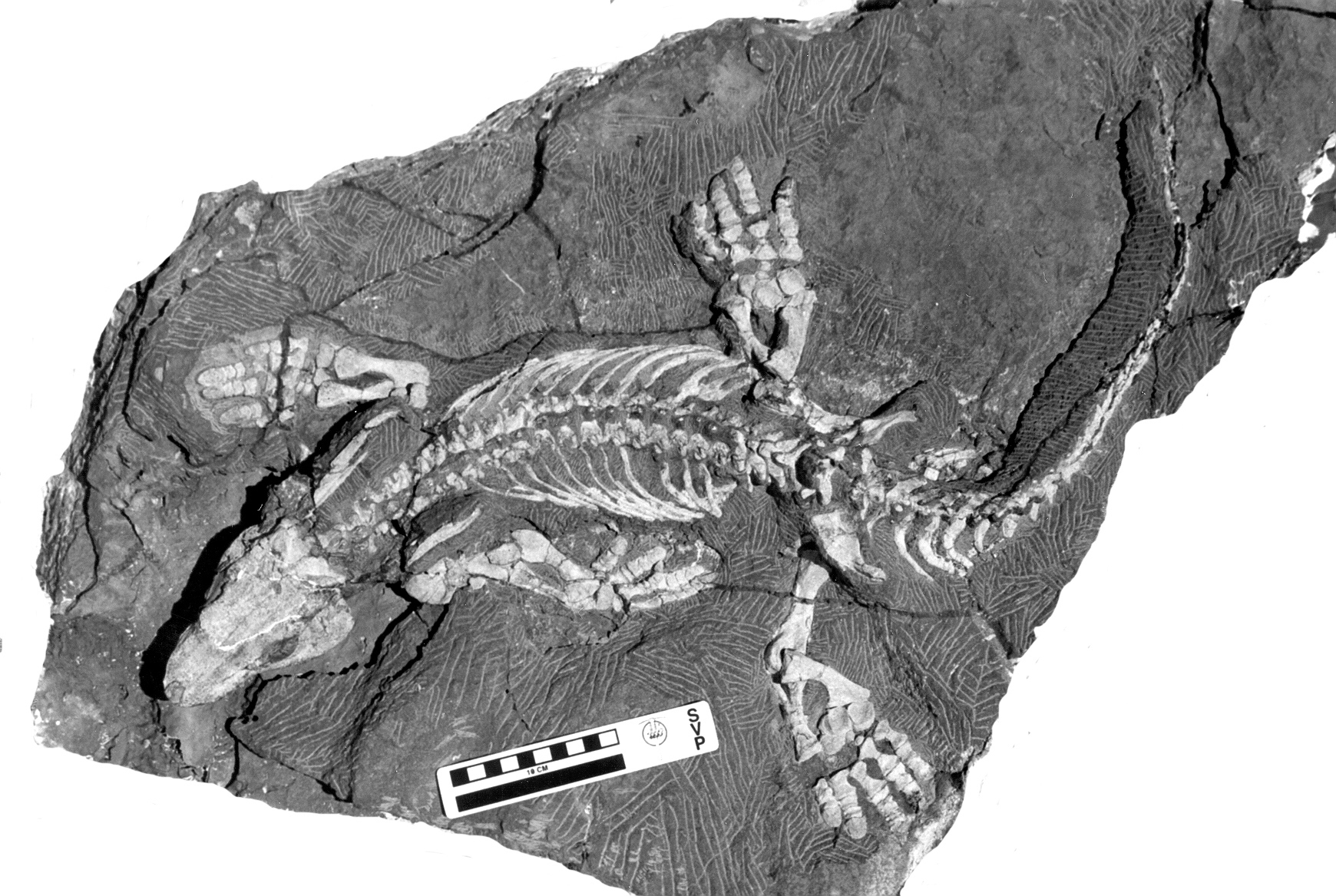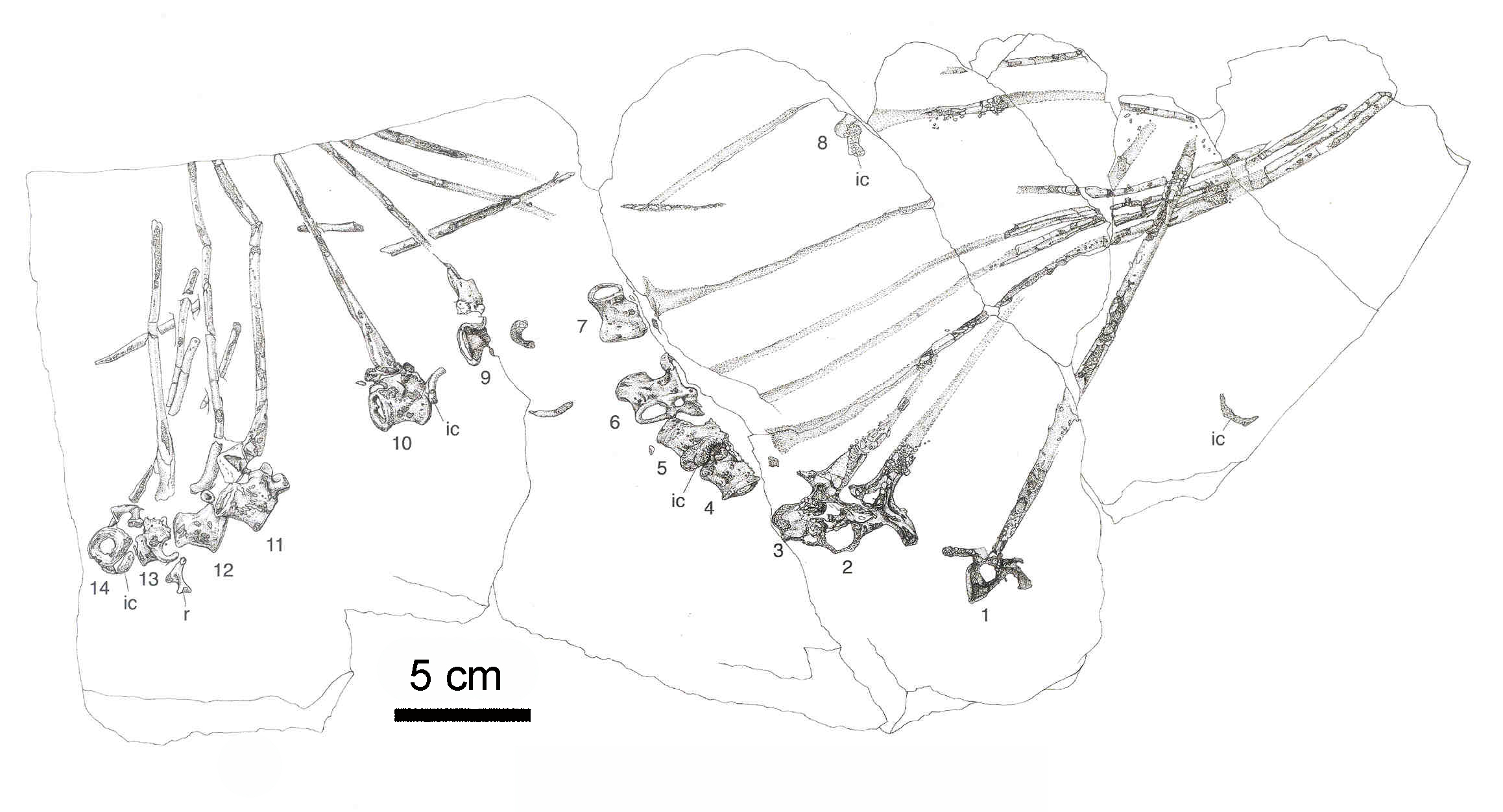The Joint
Museum der Natur
Early Permian Bromacker Project

Orobates pabsti, a new genus and species of diadectomorph from the
Early Permian Bromacker Locality of central
The Early Permian Bromacker Project is a joint effort by Dr.
David S Berman and Amy Henrici of the Carnegie Musuem of Natural
History in Pittsburgh,
The Bromacker locality has produced amongst the best preserved example of Early Permian Terrestrial vertebrates ever found. Remarkably well preserved skeletons of the terrestrial amphibian Seymouria sanjuanensis, the diadectomorphs Diadectes and Orobates, the sail-backed pelycosaur Dimetrodon, and the earliest known bipedal reptile, Eudibamus cursoris are but a fraction of the taxa known from the locality.
The Bromacker locality is the remains of an intermontane graben, preserving the first well-characterized upland, completely terrestrial ecosystem described. Its Early Permian age makes it particularly important in establishing the initial features of the first truly terrestrial ecosystems.
The Personnel
The primary investigators for the Early Permian Bromacker Project are:
Dr. David S Berman
–
Ms. Amy Henrici –
Dr. Thomas Martens
– Museum der Nature,
Dr. Stuart Sumida –

Partial sail of the first specimen of the sail-backed
pelycosaur Dimetrodon every found in
Specimen from the Early Permian Bromacker Locality of
central
Numerous colleagues from a variety of international
institutions are collaborating with the primary investigators. They include:
Dr. Jason Anderson,
Publications:
The following publications are either a direct or indirect result of the ongoing Bromacker Project. (Please note, this website is still under development. PDFs of most of the publications will be available in the near future.)
Berman, D. S,
an. d T. Martens. 1993. First occurrence of Seymouria
(Amphibia: Batrachosauria) in the Lower Permian Rotliegend of central
Sumida, S. S.,
D.
Sumida, S. S.,
D.
Berman, D. S.,
S. S. Sumida, and T. Martens. 1998. Diadectes
(Diadectomorpha, Diadectidae) from the Early Permian of central
Berman, D. S, A. Henrici, S. S. Sumida, and T. Martens. 2000. Redescription of the Early Permian German Seymouria sanjuanensis (Seymouriamorpha) based on complete, mature specimens with discussion of paleoecology of the Bromacker locality assemblage. Journal of Vertebrate Paleontology, 20:253-268. [PDF]
Eberth, D. A.,
D.
Berman, D. S, R. R. Reisz, D. Scott, A. C. Henrici, S. S.
Sumida, and T. Martens. 2000. Early Permian bipedal reptile. Science, 290:969-972. [PDF]
Berman, D. S,
R. R. Reisz, T. Martens, and A. C. Henrici. 2001. A new species of Dimetrodon (Synapsida: Sphenacodontidae)
from the Lower Permian of Germany records first occurrence of genus outside
Berman, D. S, A. C. Henrici, R. Kissel, S. S. Sumida, and
T. Martens. 2004. Orobates pabsti, a new diadectomorph tetrapod from the
Early Permian of central
Berman, D. S, A. C. Henrici, S. S. Sumida, and T. Martens.
2004. New materials of Dimetrodon teutonis (Synapsida: Sphenacodontidae)
from the Early Permian of central
Sumida, S. S., D.
Abstracts:
Sumida, S. S.,
D.
S. Sumida, D.
Sumida, S. S.
1994. Correlation between the Lower Permian of North America and central
Sumida, S. S. 1996. Reinterpreting the morphological diversity of early amniotes: new information from European and North American Paleozoic fossils. American Zoologist, 36:23A
Sumida, S. S. and
D.
Sumida, S. S.,
and D.
Sumida, S. S. and
D.
Sumida, S. S., D.
A. Eberth, and D.
Sumida, S. S. 2000. Refining the concept of the Late Paleozoic chronofauna: Early Permian vertebrates of the earliest exclusively terrestrial ecosystem. Journal of Vertebrate Paleontology, 20:65A
Sumida, S. S., D.
Sumida, S. S., D. S Berman, A. C.
Henrici, R. Kissel, D. A. Eberth, and T. Martens. 2002. Origins of the modern
terrestrial vertebrate ecosystem documented by an Early Permian assemblage from
Funding Acknowledgments:
The research activities at the Bromacker locality have been
supported generously by a series of grants from the National Geographic Society, as well as two
from NATO. The Museum der Nature, the Graham
Netting fund at the
Return to Sumida Laboratory Research Page